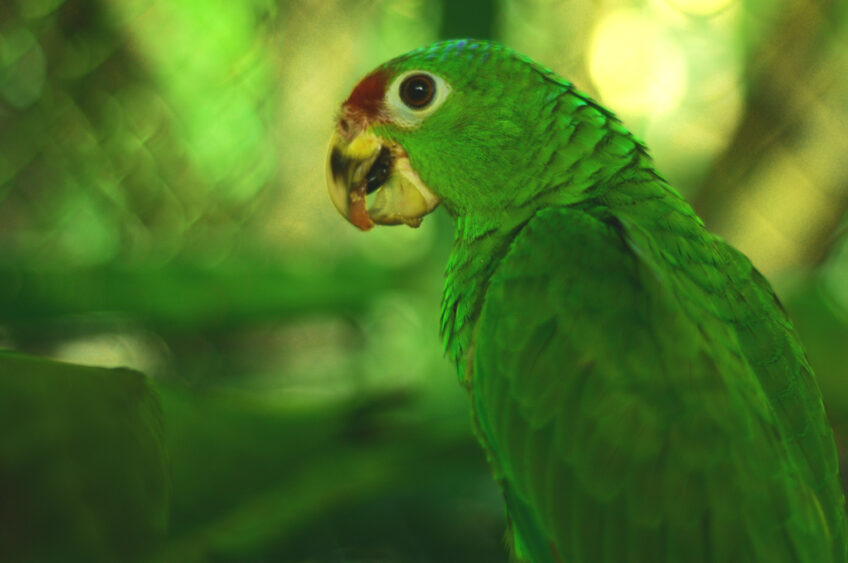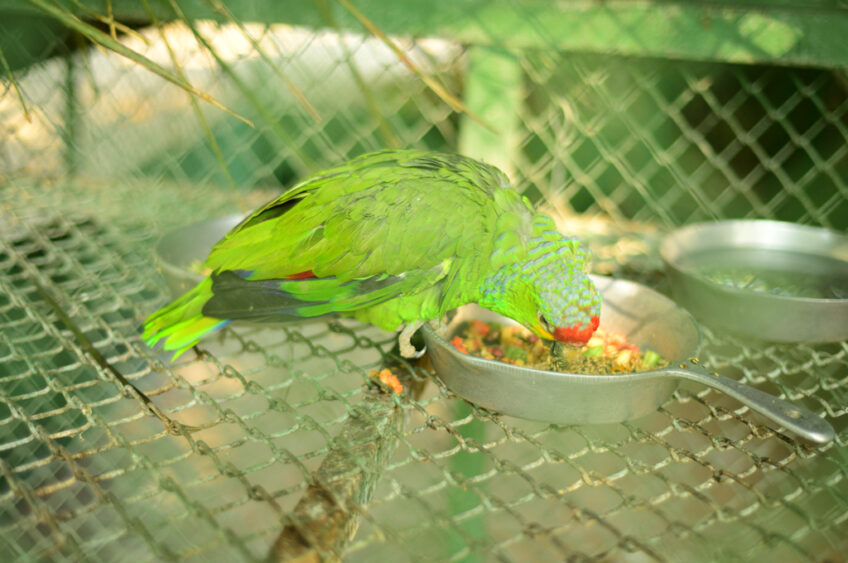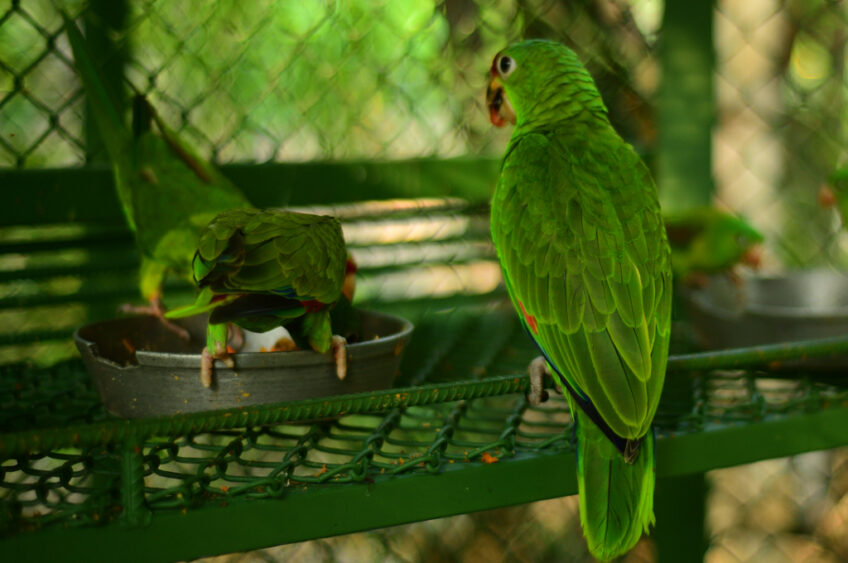Red-lored amazon
Red-lored Amazon
Common name: Red-lored Amazon or Red-lored Parrot
Scientific name: Amazona autumnalis
Distribution:
The red-lored parrot inhabits from southern Mexico to northern South America, including extensive areas of Costa Rican territory. It is mainly found in tropical wet and dry forests, forest edges, mangroves, and disturbed areas where it can find food and nesting cavities. It is one of the four species of parrots present in Costa Rica, along with the Amazona auropalliata (yellow-naped parrot), the Amazona farinosa (large green parrot), and the Amazona albifrons (white-fronted parrot or cancan parrot).

Species history: victims of pet trade and illegal hunting
For decades, the red-lored parrot has been a victim of the illegal wildlife trade. Many people extract their chicks directly from nests to sell them or keep them as pets. Their ability to mimic human sounds and words has increased their commercial value, but also their suffering.
At the Natuwa Wildlife Sanctuary, since 1994, we have received dozens of rescued individuals, giving them a second chance. Some have found a permanent home; others, unfortunately, have had to be euthanized due to extreme mistreatment or irreversible injuries upon their arrival.
Recovery and challenges at the Natuwa Sanctuary
Rescued parrots often present with trimmed wings, damaged feathers, malnutrition, or even obesity due to an inadequate diet based solely on sunflower seeds, a highly addictive food lacking the essential nutrients these birds need.
At Natuwa, these birds receive balanced diets containing fruits, vegetables, minerals, and vitamins supervised by a specialized nutritionist. However, these species pose a significant challenge for sanctuaries, as their captive population continues to grow while hunting persists.

The reality of parrots in captivity
Amazon parrots are social birds, but they can be challenging to keep in colonies within enclosed spaces. Their tendency to become aggressive toward each other means that many must be separated, requiring more space, individual enclosures, and specialized care.
For this reason, sanctuaries like Natuwa face limitations in receiving new individuals, especially those belonging to species such as Amazona auropalliata, Amazona farinosa, Amazona albifrons, and Amazona autumnalis.
These birds highlight the urgent need to end the practice of keeping parrots as pets and to promote environmental education to protect them in their natural habitats.
Conservation and hope
Each red-crested lora that arrives at Natuwa is a testament to human error, but also to the possibility of redemption.
Through educational programs, proper nutrition, and raising awareness among visitors, the Natuwa Sanctuary seeks to transform the relationship between people and wildlife, fostering respect and responsible coexistence.
